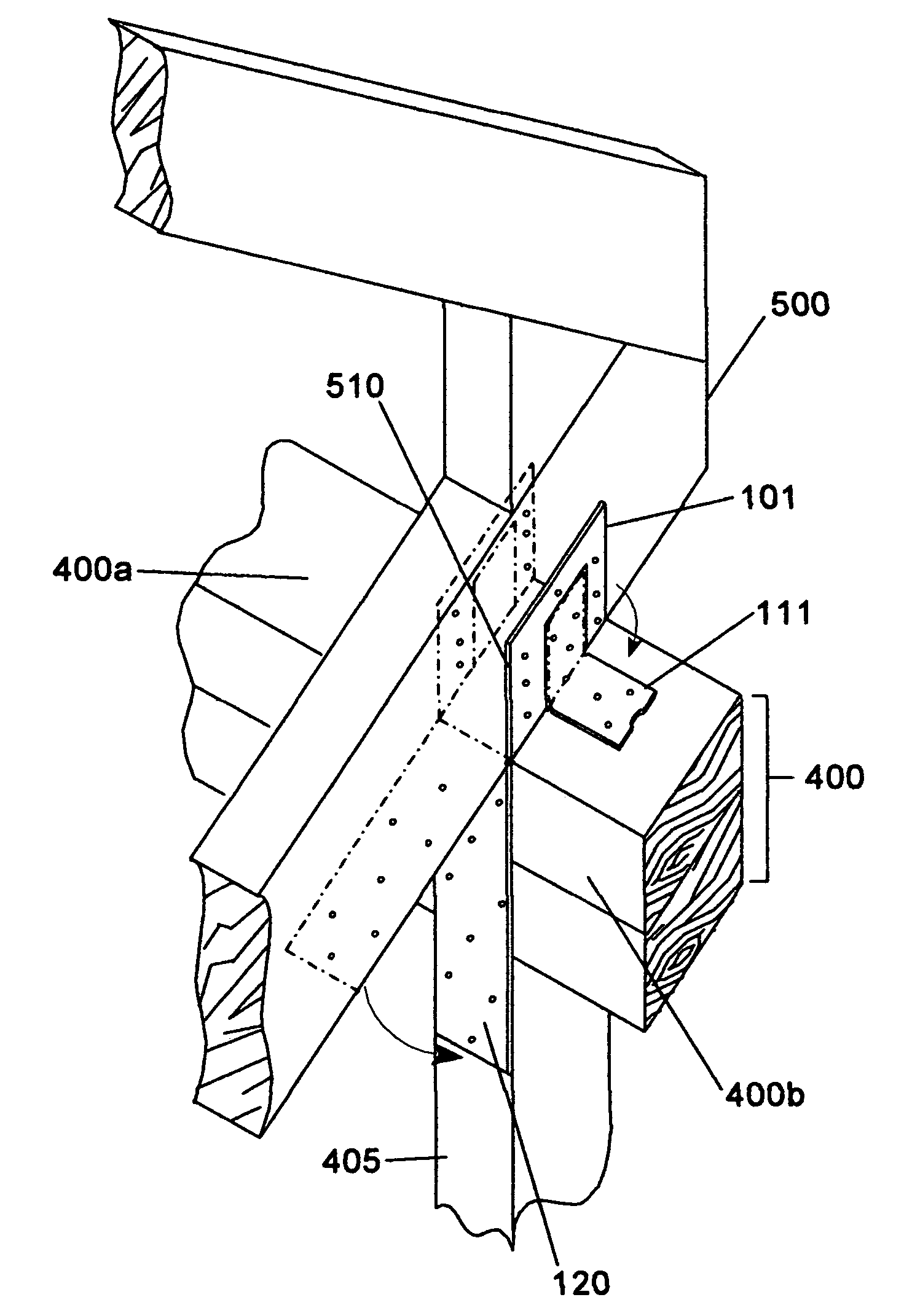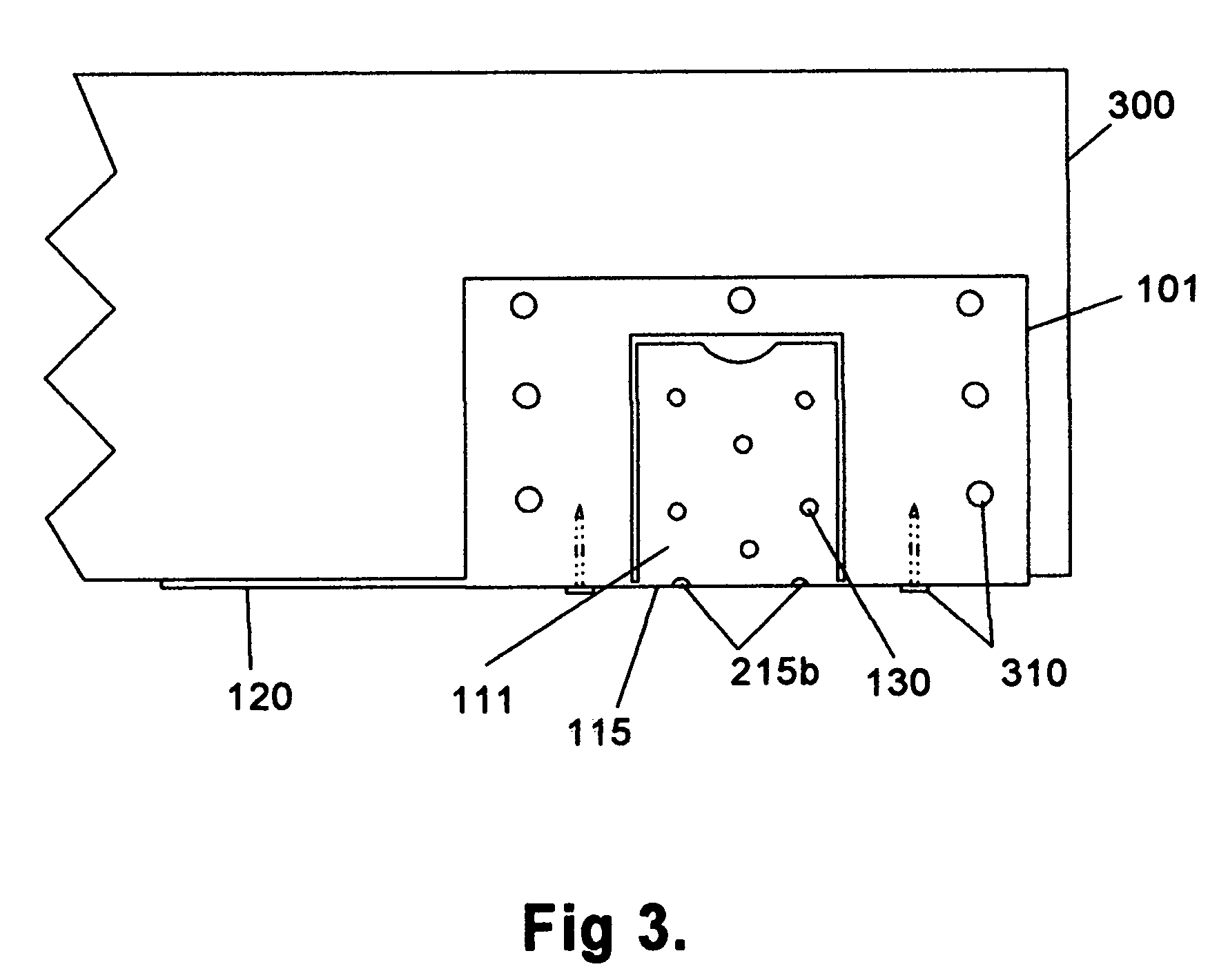Device and method for interconnecting framing components
a technology of framing components and devices, applied in the direction of building reinforcements, construction, building roofs, etc., can solve the problems of creating a whole new set of problems, unable to solve simple strap problems, and difficult to carry, store, and stack
- Summary
- Abstract
- Description
- Claims
- Application Information
AI Technical Summary
Benefits of technology
Problems solved by technology
Method used
Image
Examples
Embodiment Construction
[0030]The inventive concepts and novel features of my invention are described herein with reference to specific embodiments, which embodiments represent the best mode known to me for making and using my invention. However, it is to be noted that the embodiments as described herein are not meant to limit the scope of my invention but rather are representative of many possible embodiments that incorporate the inventive concepts of my invention.
1. STRUCTURAL FEATURES
[0031]In the preferred embodiment, the invention is fabricated from sheet metal that is sufficiently thick to meet the necessary strength requirements and yet sufficiently flexible to allow the various flaps and straps to be deployed as described below. Sheet metal of about 18 to 22 gauge is appropriate for most applications. Of course, the invention may be made of any material or combination of materials having the requisite strength and flexibility characteristics.
[0032]The invention exists in two configurations: a non-de...
PUM
 Login to View More
Login to View More Abstract
Description
Claims
Application Information
 Login to View More
Login to View More - R&D
- Intellectual Property
- Life Sciences
- Materials
- Tech Scout
- Unparalleled Data Quality
- Higher Quality Content
- 60% Fewer Hallucinations
Browse by: Latest US Patents, China's latest patents, Technical Efficacy Thesaurus, Application Domain, Technology Topic, Popular Technical Reports.
© 2025 PatSnap. All rights reserved.Legal|Privacy policy|Modern Slavery Act Transparency Statement|Sitemap|About US| Contact US: help@patsnap.com



